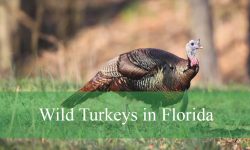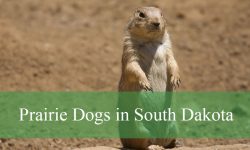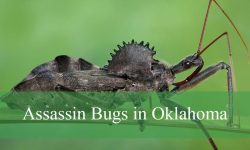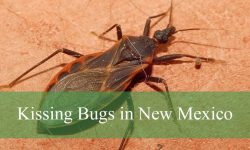Utah harvester ants are well known across the state’s deserts, foothills, and dry shrublands. Their bright coloration, highly organized colonies, and seed-collecting behavior make them fascinating insects within the Great Basin and Colorado Plateau ecosystems. Yet one question often rises above all others: Are their stings powerful enough to harm humans? Although these ants appear small and unassuming, their defensive capabilities can surprise anyone who encounters them.
Harvester ants (Pogonomyrmex species) are among the most venomous ants in North America. Studies show that their venom potency surpasses even that of some wasps and bees. The sting can cause severe local reactions, intense burning, and, in rare cases, systemic symptoms. Utah’s dry climate, open terrain, and thriving native plant communities create ideal conditions for harvester ant colonies, increasing the chances of human contact.
This article explores everything behind the sting: the ant’s venom chemistry, ecological roles, defensive strategies, and the circumstances under which humans might be harmed. Through scientific explanations and real ecological insight, we uncover why a small desert ant can deliver such a powerful punch.
Understanding Utah Harvester Ants
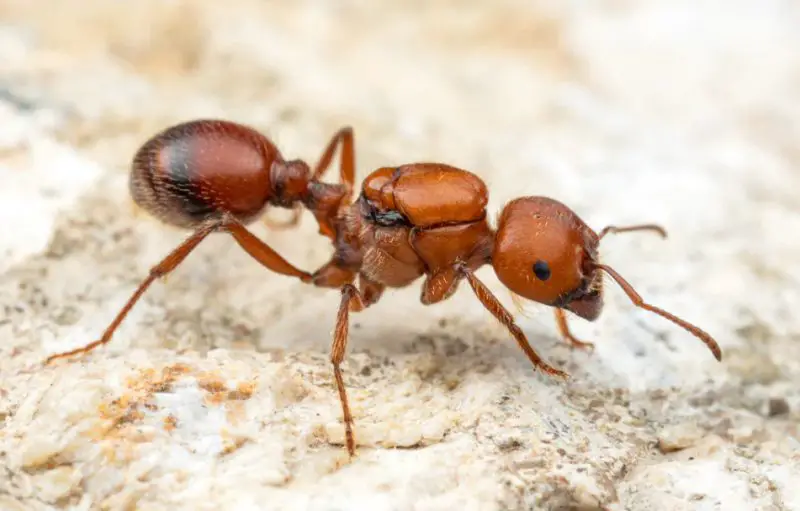
Utah’s Arid Landscapes Create Ideal Habitat
Harvester ants prefer dry, open environments—areas where sunlight reaches the ground and vegetation remains sparse. Utah’s deserts, sagebrush flats, and sandy soils provide these perfect conditions.
Their nests are often constructed under rocks, at the base of shrubs, or in open patches of bare soil. They favor warm microclimates that allow workers to forage efficiently during the day.
Because these ants rely heavily on seeds for food, regions with abundant grasses and wildflowers support higher colony densities.
The Social Structure Behind Their Efficiency
Harvester ants live in complex colonies composed of queens, workers, and developing brood. Workers perform highly specialized tasks: some forage, some defend, others care for larvae, and some maintain tunnels.
This division of labor increases colony productivity and enhances defensive coordination. When danger approaches, the colony can mobilize multiple workers within seconds.
Their organized behavior contributes to the effectiveness of their defensive stings.
Their Ecological Role Benefits Utah’s Native Plants
Despite their painful sting, harvester ants provide major ecological benefits. They disperse seeds, aerate soil, remove plant debris, and serve as prey for lizards, birds, and small mammals.
Their seed-harvesting behavior influences plant community structure. They transport seeds to underground chambers, where some seeds later germinate.
These ecological contributions make harvester ants an important part of Utah’s natural landscapes.
How Strong Are Harvester Ant Stings?
Harvester Ant Venom Ranks Among the Most Potent
Researchers have found that harvester ant venom is chemically intense, containing alkaloids, peptides, and enzymes that cause immediate burning sensations. Their venom toxicity is far stronger than that of most ant species found in North America.
A sting typically feels like a sharp puncture followed by strong heat and prolonged burning. Pain can persist for hours depending on venom volume and individual sensitivity.
This potency evolved to protect the colony from predators and large animals.
The Sting Produces Both Pain and Inflammation
When a harvester ant stings, venom spreads rapidly through superficial tissue, triggering an inflammatory response. Symptoms often include:
-
Intense burning pain
-
Redness
-
Swelling
-
Itching
-
Warmth at the sting site
These reactions can last from several hours to a full day.
Because their sting mechanism allows repeated injection, multiple stings can amplify effects dramatically.
Systemic Symptoms Are Possible but Rare
Most people experience local reactions. However, in uncommon cases, individuals may develop systemic symptoms due to allergies or multiple stings:
-
Dizziness
-
Nausea
-
Headache
-
Fatigue
-
Breathing difficulty (rare)
These reactions are more likely in children or those with heightened sensitivity to insect venom.
Despite the venom’s strength, death from harvester ant stings is exceedingly rare.
Why Utah Harvester Ants Need Such Powerful Venom
Defense Against Vertebrate Predators
Harvester ants face constant threats from lizards, toads, rodents, skunks, and birds. Utah is home to many insect-eating species capable of raiding ant nests.
Strong venom discourages predators from attacking repeatedly. Even animals that successfully consume ants often learn to avoid them afterward.
This predator-response cycle reinforces venom potency over generations.
Protection Against Competing Ant Species
Utah’s deserts host other ant species, some of which compete for food resources. Harvester ants use venom to defend foraging trails and nest entrances against rivals.
A single sting can incapacitate smaller ant species, giving harvesters an advantage in territorial disputes.
This inter-species competition shapes venom evolution.
Safeguarding Seeds, Larvae, and the Queen
The colony invests enormous energy into storing seeds and caring for larvae. Venom becomes a critical tool in protecting these resources.
Intruders—whether insects or small vertebrates—face immediate attack from worker ants. Their sting acts as the final barrier protecting the colony’s central chambers.
These biological pressures explain the powerful nature of their venom.
How Harvester Ants Deliver Their Sting
Their Mandibles Grip, Their Stinger Pierces
Harvester ants first bite with strong mandibles to anchor themselves securely. Once attached, they bend their abdomen forward and drive the stinger into the skin.
This “hook-and-sting” method ensures stable venom delivery even if the victim tries to shake them off.
The anchored bite is not what causes pain—it is the venom delivered through the stinger.
Venom Injection Is Rapid and Precise
Once the stinger penetrates the skin, venom flows through a hollow channel. The amount delivered can vary depending on the ant’s size and defensive motivation.
A single sting may be enough to trigger strong pain, but multiple stings amplify symptoms dramatically.
Workers can sting repeatedly because their stinger does not detach.
Alarm Pheromones Signal Other Workers
Harvester ants communicate through pheromones. When one ant stings, chemical signals trigger nearby workers to rush to the defense zone.
This creates the potential for cluster attacks—multiple ants stinging within a short period. Such coordinated defense can overwhelm both predators and unsuspecting humans.
Cluster attacks are the main reason harvester ant stings can be dangerous.
Where Harvester Ants Are Most Often Encountered in Utah
Desert Grasslands and Sagebrush Flats
These open areas provide excellent seed availability. Workers forage daily during warm weather, forming visible trails between the nest and food sources.
Hikers in these environments may unintentionally step on nests and trigger defensive reactions.
The soil mounds around nests often appear as cleared, circular patches.
Footpaths and Recreational Areas
Harvester ants often build nests near trail edges, bike paths, and campsites because these locations receive abundant sunlight.
Outdoor visitors who rest or stand near colony entrances may face aggressive defense.
Understanding nest structure helps avoid accidental encounters.
Residential Areas With Dry Landscaping
Homes with rock gardens, xeriscaping, or open soil patches may attract harvester ants. Their nesting mounds can appear along fences, patios, or lawns.
Urban colonies tend to be smaller but can still deliver painful stings if disturbed.
Proactive detection reduces risk near homes.
Why Humans Sometimes Get Stung
Accidental Disturbance of Nests
Most harvester ant stings occur when someone steps too close to or directly on a nest entrance. Workers respond instantly to vibration and shadow movement.
Because nests have wide entrances, disruption can activate dozens of defenders.
Shoes, sandals, or bare feet provide little protection.
Sitting or Kneeling on Foraging Trails
Their foraging trails blend with the ground, making them easy to overlook. Resting outdoors without checking the ground can place hands or legs directly in their pathways.
When crushed or trapped, ants sting defensively.
Checking for ant activity is essential during outdoor activities.
Handling Objects Near Colonies
Campers or homeowners may move rocks, logs, or outdoor items without noticing ants beneath them. Harvester ants react aggressively to sudden exposure.
Workers may climb onto hands or arms and sting quickly.
Awareness of surroundings is key in ant habitats.
The Chemistry Behind Their Sting
Venom Contains Powerful Alkaloids
One of the primary components of harvester ant venom is piperidine alkaloids. These compounds cause burning sensations and tissue irritation.
They also serve antimicrobial functions, protecting ants from infections after stings or injuries.
This chemical complexity contributes to sting potency.
Enzymes Amplify Tissue Response
Proteolytic enzymes break down proteins in the skin, causing swelling and redness. These enzymes intensify inflammation and prolong pain.
They also help deter predators by making the experience unforgettable.
The rapid onset of pain is part of their defensive strategy.
Pheromones Heighten Colony Coordination
Venom contains alarm chemicals that alert nearby ants. These pheromones intensify aggression, making defending workers more active.
Chemical coordination increases division of labor during nest defense.
This chemical communication system is one of the most complex among ant species.
Are Utah Harvester Ant Stings Strong Enough to Harm Humans?
Yes, Their Stings Can Cause Significant Pain
Most adults describe harvester ant stings as extremely painful—often more intense than bee or wasp stings. Pain peaks quickly and may persist for several hours.
The sensation may radiate to surrounding tissues, creating a “hot spike” feeling.
This strength demonstrates the ant’s defensive investment.
Serious Reactions Are Possible
While severe medical issues are rare, they can occur. Individuals may experience:
-
Large local reactions
-
Swelling spreading beyond the sting site
-
Welts or hives
-
Dizziness
-
Shortness of breath
-
Nausea
Multiple stings increase risk, especially in children or allergic individuals.
Medical attention is advised if symptoms escalate.
Deaths Are Extremely Rare
There are no common records of fatal harvester ant stings in Utah. Their venom, while potent, usually affects only local tissues.
However, anaphylaxis is possible in sensitive individuals. Prompt treatment reduces risk.
Overall, the ants are more painful than dangerous.
Why Their Stings Feel More Intense Than Bee Stings
Bees Deliver Limited Venom
A honeybee stinger delivers a fixed amount of venom. Harvester ants can sting repeatedly, injecting additional venom each time.
Multiple stings can compound effects quickly.
Ant Venom Chemistry Is More Balanced
Harvester ant venom contains both neurotoxic and enzymatic components. This duality increases both immediate pain and prolonged inflammation.
Bee venom is less chemically diverse.
Ants Target Soft Tissue
Harvester ants often sting exposed skin—ankles, wrists, hands—where the sting feels more intense.
Bee stings usually occur through clothing or on thicker skin.
Avoiding Harvester Ant Stings in Utah
Learn to Recognize Their Nests
Harvester ant nests often appear as:
-
Clean circular areas
-
Gravel piles
-
Bare soil mounds without vegetation
Identifying these structures helps hikers avoid them.
Wear Protective Clothing
Closed-toe shoes, long socks, and gloves help reduce sting risk. Thick fabrics limit access to skin.
Light-colored clothing can help identify ants climbing up the fabric.
Check the Ground Before Sitting
Simple awareness prevents accidental contact. Looking for ant trails ensures safer outdoor activities.
Teaching children to inspect the ground reduces risk for families.
FAQs About Utah Harvester Ant Stings
Are harvester ants aggressive?
They are defensive, not aggressive. They sting only when their nest or trail is disturbed.
How painful is a harvester ant sting?
Extremely painful. It often surpasses a bee sting in intensity.
Do harvester ants bite or sting?
They do both. They bite to hold on and sting to inject venom.
Are they dangerous to pets?
Pets may experience pain and swelling but usually recover quickly.
What should I do after a sting?
Wash the area, apply ice, and use antihistamines if swelling increases.
Do harvester ants chase people?
No. They defend only the immediate nest area.
Where are they most common?
Utah deserts, foothills, sagebrush flats, and dry residential zones.
Can multiple stings be dangerous?
Yes, especially for children or allergic individuals.
Conclusion
Utah harvester ant stings are strong enough to harm humans—primarily through intense localized pain, swelling, and, in rare cases, systemic reactions. Their venom, among the most potent of any North American ant, evolved as a powerful defensive tool to protect colonies from predators and environmental threats. Although encounters can be painful, understanding their behavior, habitat, and ecological importance helps reduce risks and allows hikers, homeowners, and outdoor enthusiasts to coexist safely with these remarkable insects.
Harvester ants play vital roles in Utah’s ecosystems, shaping plant communities, dispersing seeds, and contributing to soil health. Appreciating their biology, while respecting their defensive capabilities, offers a clearer picture of the delicate balance within the state’s desert landscapes.

